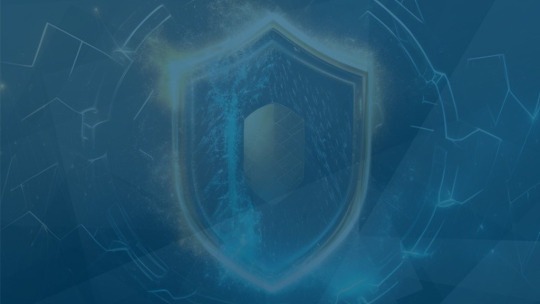#Endpoint security
Text
BitDefender Endpoint Security Partner in Dubai
Excited to announce our partnership with BitDefender Endpoint Security in Dubai! As we join forces to enhance cybersecurity, we're committed to delivering top-notch protection and peace of mind to businesses in the region. Together, we're building a safer digital future!
#it solutions company in dubai#techbee dubai#bitdefender#partner#supplier#reseller#endpoint security#cybersecurity
2 notes
·
View notes
Text
Industrial Cybersecurity Market Worth $49.53 Billion by 2030
A recent report by Meticulous Research®, a prominent market research firm, titled, ‘Industrial Cybersecurity Market by Component (Solutions, Services), Security Type (Endpoint Security, Network Security), End User (Industrial Manufacturing, Transportation & Logistics) and Geography—Global Forecasts to 2030.’
As per the latest report by Meticulous Research®, the global industrial cybersecurity market is anticipated to experience a compound annual growth rate (CAGR) of 14.8% between 2023 and 2030, reaching a valuation of $49.53 billion by 2030. The market's expansion is primarily fueled by the rise of disruptive digital technologies and the escalating frequency and complexity of cyber threats. Furthermore, the increasing demand for cloud-based security solutions among small and medium enterprises (SMEs) and the adoption of Artificial Intelligence, Machine Learning, and Blockchain technologies for enhancing cyber defense are poised to present significant growth prospects. Nonetheless, the shortage of skilled professionals may pose a constraint on market growth to some extent.
The industrial cybersecurity market is categorized based on components, security types, deployment modes, and end users globally. The report also assesses competitors within the industry and examines market dynamics at both country and regional levels.
Based on component, in the global industrial cybersecurity market, there are two main segments: solutions and services. By 2023, it is anticipated that the solutions segment will dominate the market. This growth is attributed to rising concerns about data security and privacy, as well as ongoing efforts by industrial stakeholders to enhance efficiency, cut costs, and bolster security measures. Furthermore, the solutions segment is predicted to experience the highest compound annual growth rate (CAGR) throughout the forecast period.
Based on security type, the global industrial cybersecurity market is divided into various security types, including network security, application security, cloud security, endpoint security, and others. By 2023, it is anticipated that the endpoint security segment will hold the largest portion of the market. This growth is linked to the significant increase in the quantity of endpoint devices and the growing need for endpoint security solutions to safeguard diverse enterprise networks. Moreover, the endpoint security segment is forecasted to exhibit the highest compound annual growth rate (CAGR) over the forecast period.
Based on deployment mode, in the global industrial cybersecurity market, there are two deployment segments: on-premises and cloud-based. By 2023, it is projected that the cloud-based deployment segment will dominate the market. This dominance can be attributed to several factors, including the emergence of new opportunities for cloud-based deployments, the enhanced flexibility and cost-effectiveness associated with cloud-based solutions, and the growing adoption of cloud-based solutions among small and medium-sized enterprises. Furthermore, the cloud-based deployment segment is expected to experience the highest compound annual growth rate (CAGR) throughout the forecast period.
Based on end user, the global industrial cybersecurity market is divided into various end-user segments, including industrial manufacturing, energy and utilities, transportation and logistics, and others. By 2023, it is projected that the industrial manufacturing segment will hold the largest portion of the market. This growth is driven by increased demand for real-time security monitoring among manufacturers, the escalation of cybersecurity incidents, and the expanding usage of smart devices. However, the transportation and logistics segment are anticipated to experience a higher compound annual growth rate (CAGR) during the forecast period.
Geographic Review:
Based on geography, the market is categorized into North America, Europe, Asia-Pacific, Latin America, and the Middle East & Africa regions. By 2023, North America is forecasted to dominate the global industrial cybersecurity market. This dominance is linked to escalating government initiatives, the proliferation of advanced technologies in the region, and the mounting cyber threats in the industrial sector. Conversely, Asia-Pacific is expected to exhibit the highest compound annual growth rate (CAGR) throughout the forecast period.
Key Players:
The prominent players in the industrial cybersecurity market include Fortinet, Inc. (U.S.), Cisco Systems, Inc. (U.S.), Cyberark Software Ltd. (U.S.), F5, Inc. (U.S.), Juniper Networks, Inc. (U.S.), Intel Corporation (U.S.), Imperva, Inc. (U.S.), Palo Alto Networks, Inc. (U.S.), IBM Corporation (U.S.), Check Point Software Technologies Ltd. (Israel), Splunk, Inc. (U.S.), Mandiant, Inc. (U.S.), Broadcom, Inc. (U.S.), Oracle Corporation (U.S.), Microsoft Corporation (U.S.), and RSA Security LLC (U.S.).
Download PDF Brochure @ https://www.meticulousresearch.com/download-sample-report/cp_id=5316
Key questions answered in the report:
Which segments show high growth potential in terms of components, security types, deployment modes, end users, and countries?
What is the past performance of the global industrial cybersecurity market?
What are the projected market figures and estimates for the period spanning from 2023 to 2030?
What are the primary factors fueling growth, hindering progress, and presenting potential avenues for advancement in the worldwide industrial cybersecurity market?
Who are the key players in the global industrial cybersecurity market, and what is their respective market share?
Who are the primary players in different countries' industrial cybersecurity markets, and what portion of the market do they control?
What does the competitive environment look like?
What are the latest advancements or updates in the global industrial cybersecurity market?
What strategies do major market players employ?
What are the trends in different regions and countries experiencing significant growth?
Who are the emerging local players in the global industrial cybersecurity market, and how do they compete with established competitors?
Contact Us:Meticulous Research®
Email- [email protected]
Contact Sales- +1-646-781-8004
Connect with us on LinkedIn- https://www.linkedin.com/company/meticulous-research
#Industrial Cybersecurity Market#Cybersecurity#Network Security#Cloud Security#Cloud computing#Endpoint Security#Threat Management#Industrial Cybersecurity
0 notes
Text
How to Choose the Right Antivirus Software: A Comprehensive Guide
In today’s digital age, where our lives are intricately intertwined with technology, safeguarding our digital assets has become paramount. With the proliferation of cyber threats, antivirus software stands as a crucial line of defense against malware, viruses, ransomware, and other malicious entities lurking online. However, the abundance of antivirus options can be overwhelming, making it…

View On WordPress
#A#Advanced Behavioral Analysis Software#Advanced Threat Detection#Antivirus#Antivirus Software#Automated Security Incident Response#Cloud Security Solutions#Cloud-Based Endpoint Security Platform#Comprehensive Data Protection Suite#Continuous Vulnerability Assessment#Cyber Defense#Cybersecurity#Cybersecurity Awareness Training#Data Encryption Software#Data Protection#Defense#Encryption#Endpoint Protection Suite#Endpoint Security#Firewall#Firewall Protection#Identity Theft#Identity Theft Prevention#Integrated Firewall Protection Mechanism#Internet Security Software#Malware#Malware Detection#Malware Removal Tool#Mobile Device Management#Multi-Layered Malware Defense System
0 notes
Text
Beyond Anti-Virus’ Shark Nets’: Why Current Approaches to Cybersecurity Need to Change

What do shark nets and anti-virus software have in common? According to our CEO Camellia Chan, they both suffer from three weaknesses:
-> Lack of control over the environment
-> Inability to address the unknown
-> Overreliance on human vigilance
This analogy highlights the need for a new cybersecurity approach, given the challenges posed by the expanding attack surface and unknown cyber threats in today’s digital landscape.
Visibility over cloud infrastructure diminishes at higher levels, making continuous monitoring challenging. To establish a robust defense against intruders, organizations must create a controlled enclave environment with limited access points and constant device action monitoring, as exemplified by the X-PHY Cybersecure SSD.
By using Artificial Intelligence and Machine Learning, the X-PHY identifies potential intrusions with high accuracy and rapid response times, simplifying threat detection to read and write patterns at the hardware level. This minimizes false positives and reduces the need for human intervention.
For the full article, follow this link: antivirus endpoint security
0 notes
Text
0 notes
Text
Don’t let flaws compromise the integrity of the app!

In the modern digital era, where cyberattacks are getting more complex and frequent, application security is essential. App vulnerabilities can compromise the integrity of your app and put your users’ sensitive information at risk. Therefore, ensuring your application is secure and protected from potential cyber threats is essential. This blog will discuss how application security protects your apps by attaining, fixing, and strengthening the security once we deploy them. Read More: Don’t let flaws compromise the integrity of the app!
#app encryption#cloud app security#cloud security#critical infrastructure protection#cybersecurity and infrastructure security agency#data encryption#data encryption standard#data loss prevention#data security#database activity monitoring#endpoint security#firewall in computer network#infrastructure security#network admission control#network firewall security#Network Security#prisma cloud#secure cloud storage#security on the internet#web application security
0 notes
Link
If you think we do not need to secure your endpoints then you are wrong because corporate endpoints are the main target and entry point of cyber attackers or data breaches. Securing your endpoints is very important because every year 17% of data breaches and cyber-attacks happen through endpoints. Practices for endpoint security help you to protect your endpoints. If you do not know about endpoint security practices and the importance of endpoint security. Then do not worry, in this article, we will share with you all the important information related to endpoint security.
0 notes
Text
Artificial Intelligence in Security Market- Global Opportunity Analysis and Industry Forecast (2020-2027)
Meticulous Research® – leading global market research company studying report titled “Artificial Intelligence in Security Market by Offering (Hardware, Software, Service), Security Type (Network Security, Application Security), Technology (Machine Learning, NLP, Context Awareness), Solution, End-User, and Region - Global Forecast to 2027’’.
According to this latest publication from Meticulous Research®, Artificial Intelligence in Security Market will increase at a CAGR of 22.9% from 2019 to 2027 to exceed market revenue beyond $50 billion by 2027. IoT combines connectivity with sensors, devices, and people, enabling a form of free-flowing conversation between man & machine and software & hardware. Whereas, AI is expected to make a huge impact on the economy by transforming enterprises into digital businesses and facilitating new business models, improving efficiency, and increasing employee-customer engagement and cybersecurity. Artificial intelligence power with IOT connectivity is used to protect and secure the network connecting IoT devices to back-end systems on the Internet. AI in security authenticates an IoT device by managing multiple users of a single device platform. Moreover, it ranges from simple pins or static password to more robust authentication mechanisms such as digital certificates, biometrics, and two-factor authentication. AI also aids in connecting the physical and digital world by tracking objects, collect data, analyze it, and take required action. Modern security AI can monitor activities of an object along with its progress in a specific time period. According to the Internet Crime Complaint Center (IC3), in 2016, cybercrimes resulted in losses of over $1.33 billion, globally. Such exponential loss is expected to propel the demand for security solutions, thus propelling the growth of the artificial intelligence in security market significantly.
The artificial intelligence in security market study presents historical market data in terms of value (2017 and 2018), estimated current data (2019), and forecasts for 2027 - by offering, security type, technology, solution, and end-user. The study also evaluates industry competitors and analyzes the market at regional and country level.

Download Sample Report Here: https://www.meticulousresearch.com/download-sample-report/cp_id=4991
Artificial Intelligence in Security Market Segmentation:
AI in Security Products
· Hardware
· Software
· Services
AI in Security Types
· Endpoint Security
· Network Security
· Application Security
· Cloud Security
AI in Security Technologies
· Machine Learning
· Natural Language Processing (NLP)
· Context Awareness Computing
AI in Security Solutions
· Identity and Access Management (IAM)
· Risk and Compliance Management
· Encryption
· Data Loss Prevention (DLP)
· Unified Threat Management (UTM)
· Antivirus/Antimalware
· Intrusion Detection/Prevention System (IDS/IPS)
· Others
AI in Security End-Users
· Enterprise
· BFSI
· Government & Defense
· Retail
· Healthcare
· Manufacturing
· Automotive & Transportation
· Infrastructure
· Others
AI in Security Segmentation by Geography
· North America
o U.S.
o Canada
o Mexico
· Europe
o Germany
o U.K.
o France
o Italy
o Spain
o Rest of Europe
· Asia-Pacific
o China
o Japan
o South Korea
o India
o Australia
o Rest of APAC
· Rest of the World
o Latin America
o Middle East & Africa
Key Players of AI in Security Market
· Acalvio Technologies, Inc.
· Com, Inc.
· Cylance Inc.
· Darktrace Limited
· IBM Corporation
· Intel Corporation
· Micron Technology
· Nvidia Corporation
· Samsung Electronics Co., Ltd.
· Securonix, Inc.
· Sift Science
· Skycure Inc.
· Sparkcognition
· Threatmetrix
· Xilinx Inc.
Speak with Our Analyst: https://www.meticulousresearch.com/speak-to-analyst/cp_id=4991
Application Security Segment to Witness Fastest Growth through 2027
Based on security type, the market is segmented into endpoint security, network security, application security, and cloud security. In 2018, endpoint security accounted for the largest share of the global artificial intelligence in security market. The large share of this segment is attributed to the rapidly increasing number of connected devices worldwide. However, application security segment is expected to register the highest growth rate since many organizations have started using large number of applications for their business operations that are needed to be secured from threats.
Machine Learning to Provide Significant Growth Opportunities
Based on technology, the artificial intelligence in security market is segmented into machine learning, Natural Language Processing (NLP), and context awareness computing. Machine learning segment is expected to witness rapid growth during the forecast period, owing to its ability to collect and handle big data and quickly scan, parse, and react to anomalies. Machine learning can also help operators reverse engineer attacks to make improvements to their systems, by addressing and preventing attacks before they happen.
Asia-Pacific: The Fastest Growing Regional Market
North America commanded the largest share of the global artificial intelligence in the security market in 2018, followed by Asia-Pacific, Europe, Latin America, and Middle East & Africa. However, Asia-Pacific is the fastest growing regional market due to the increasing incidents of cyberattacks and growing cyber-war; rising concerns about data security; rapid adoption of cybersecurity solutions and machine learning; high adoption of advanced technologies, such as IoT, big data analytics, and cloud computing; and increasing number of 5G pilot projects in the region.
You Can Buy Report Here: https://www.meticulousresearch.com/Checkout/44066182
sKey Players in the Artificial Intelligence in Security Market
The report includes an extensive assessment of the key strategic developments adopted by leading market participants in the industry over the past 4 years (2016-2019). For instance, in June 2018, ThreatMetrix has launched a new risk engine API specifically to support 3DS 2.0 environments, enhancing risk-based decisions for card-not-present transactions.
The major players operating in the global artificial intelligence in security market are Acalvio Technologies, Inc. (U.S.), Amazon.Com, Inc. (U.S.), Cylance Inc. (U.S.), Darktrace Limited (U.K), IBM Corporation (U.S.), Intel Corporation (U.S.), Micron Technology (U.S.), Nvidia Corporation (U.S.), Samsung Electronics Co., Ltd. (South Korea), Securonix, Inc. (U.S.), Sift Science (U.S.), Skycure Inc. (U.S.), Sparkcognition Inc. (U.S.), Threatmetrix Inc. (U.S.), and Xilinx Inc. (U.S.).
Browse in depth report: https://www.meticulousresearch.com/product/artificial-intelligence-in-security-market-4991
Contact Us:
Meticulous Research®
Email- [email protected]
Contact Sales- +1-646-781-8004
Connect with us on LinkedIn- https://www.linkedin.com/company/meticulous-research
#Artificial Intelligence in Security Market#Artificial Intelligence in Security#Artificial Intelligence#business#security#industry#ai in security#ai#endpoint security#cloud security#cybersecurity
1 note
·
View note
Text
Malwarebytes Launches MDR Solution for SMBs
Malwarebytes Launches MDR Solution for SMBs
Home › Endpoint Security
Malwarebytes Launches MDR Solution for SMBs
By Kevin Townsend on October 12, 2022
Tweet
Endpoint detection and response (EDR) specialist provider Malwarebytes has launched a new managed detection and response (MDR) solution to bring threat and incident detection to the SMB market. SMBs are heavily targeted by malicious actors because they are often considered to be the…
View On WordPress
#Bob Shaker#cybersecurity#endpoint security#Malwarebytes#managed detection and response#mdr#SMB#threat detection
0 notes
Text
#Industrial Cybersecurity Market#Cybersecurity#Network Security#Cloud Security#Cloud computing#Endpoint Security#Threat Management#Industrial Cybersecurity
0 notes
Text
Konica Minolta Introduces New Endpoint-Monitoring Security Service
Konica Minolta Introduces New Endpoint-Monitoring Security Service
Konica Minolta Business Solutions, U.S.A. today announced its new Managed Endpoint Detection and Response (MEDR) service, which is designed to protect endpoints against attacks and exploitation.
The cloud-based service helps to secure endpoints – desktop PCs, laptops, and printers – on organizations’ networks by detecting unusual or potentially malicious activity and responding to neutralize any…

View On WordPress
0 notes
Link
0 notes
Text
5 Essential Tools for Today’s Modern Security Operations Center (SOC) - Comtact
Equipping (or re-equipping) the Security Operations Center (SOC) can be challenging. With so many tools to choose from, even the best-funded security teams are forced to make tough decisions.

So what are the most important tools for a modern SOC? Well ... it depends.
Primary functions of SOC
When the tools are tempting to go live, it's important to clearly understand what your SOC wants to achieve first. Instead of trying to build your team around a randomly selected set of tools, you should also choose tools that support your needs, environment, and team.
So what can SOC do?
Although many security vendors will provide one, it is impossible to give an exact definition of SOC and what it does. Each SOC is slightly different with its own dispatch, metrics, and expectations. That being said, some functions are (almost) shared by each SOC:
Data collection, correlation, and analysis. This is arguably the most common and most important function of any SOC and is largely based on the use of system logs. Activities on security devices such as data flow, network telemetry, packet capture, Syslog, and firewall are all commonly compiled and used by SOC teams.
Data richness. Working with log files alone can be daunting, so enriching logged data with security information and intelligence sources is another important SOC task. Rich data is used for active decision-making and for a better understanding of safety incidents.
Identification of danger. Note that this event is not a response. SOC teams are usually responsible for identifying any and all risks to an organization’s IT assets. This is done in a variety of ways using risk assessment, scanning tools, behavioral analysis, and threat hunting.
Monitoring the environment with networks, users, and all systems and services for suspicious or malicious activity.
Security system design, system rigorous and preventive maintenance. Safety should not be a purely reactive discipline - there should always be tools, policies, and procedures in place to avoid the most common threats to their source. It is the SOC’s job to keep them in place and constantly monitor them to ensure they remain ongoing and effective.
Recovery and remedy after an incident. Computer Security Incident Response (CSIRT) teams typically handle active security incidents, usually SOCs handling these comprehensive recovery efforts.
Incident response (only for organizations without a separate CSIRT). Creating incident responses in SOCs is common in small and medium-sized organizations where the budget does not allow the maintenance of two separate teams.
Of course, this is far from what SOC can do. More advanced functions include:
Investigate the root cause for serious or unusual events
Compliance management
Analysis of past events to gather information about attack methods and techniques
Forensic analysis
Dedicated threat hunting
Tooling should match responsibilities
Although there are some tools that you might consider 'necessary' in practice, there are huge differences between the tools that different SOC teams need. These differences are driven by many factors, but perhaps the most common (and important) are:
Network coverage and complexity
Available budget
SOC team manpower
Imagine two organizations of approximately the same 'size' in terms of revenue. Here's what makes them different:
Organization #1 is a retail business with 20 locations, each with dozens of endpoints, its own local backup server, and a large user base with minimal IT training and relatively high turnover. Maintaining network uptime and protecting customer payment information are its main security objectives.
Organization #2 is a research laboratory that contracts with a number of government and military organizations. The lab runs from a single site and has fewer than 100 users. Protecting the integrity and privacy of sensitive research data is its main security objective.
Each of these organizations requires SOCs — but clearly, they do not have exactly the same requirements. The lesson here is simple. Before you spend too much time thinking about which tools to buy, make sure you first know what goals your SOC should achieve.
The Most Common (and Important) SOC Tools
With all of this out there, some security tools can be considered ‘essential’ for most SOCs. Note that each of the following items is directly related to one of the functions explained earlier in this article.
Tool #1: Incident/Case Management
Every time something suspicious turns up in an organization’s environment, the SOC must investigate it. Of course, this happens a lot — and without effective event management tools, there is almost no guarantee that things will be lost, forgotten or missed.
An effective event management team creates a permanent record of each event, including which team members participated, what they did, and the outcome. It also helps inter-team collaboration, for example, between SOC and IT operations.
Tool #2: SIEM + Enrichment Sources
Log collection is one of the main functions of SOC. SIEM (Security Information and Event Management) is the primary tool used to collect, correlate, enrich, and analyze logs. The SOC must also rely on a variety of security data, information and intelligence sources, which SIEM uses to identify suspicious and malicious activity on the strength of legal network activity.
Tool #3: Firewall
The firewall monitors network traffic and allows or blocks data packets coming or going based on constantly updated security rules. A firewall can be software installed on each device or on a hardware device that sits within an organization's network and its gateway. Today, most organizations use both although software firewalls have in some cases been replaced by alternative technologies.
A firewall creates a barrier between an organization’s internal network and incoming traffic from the Internet or another network. This allows it to obstruct malicious traffic such as malware before it enters the network. Firewalls also create logs of all incoming and outgoing traffic, which can be valuable for SOC teams when analyzing suspicious or malicious activity.
Tool #4: Incident Detection/Prevention Systems (IDS/IPS)
Since firewalls are never failsafe, most organizations also use IDS and/or IPS tools. These tools analyze the network activity to uncover malicious behavior as early as possible and either alert the SOC or block it directly.
Tool # 5: Antivirus (AV) and/or Endpoint Detection and Response (EDR) tools
Historically, one of the most difficult places to identify malicious activity has been on endpoint devices such as PCs, laptops, and mobile devices. One of the first attempts to address this issue is to install an antivirus solution at each endpoint designed to detect and block malicious activity. It worked reasonably well, however, as the evolution of threats accelerated, these measures became harder and harder to sustain.
Today, most organizations use EDR tools to constantly monitor endpoints for suspicious activity and report back to the SOC. More advanced EDR tools use behavioral analysis rather than relying on a database of known threats, as this approach is more capable of coping with the latest threats.
Creating a SOC is expensive
Naturally, not all of these tools are cheap. Even basic SOCs with the above tools can cost the organization hundreds of thousands of pounds per year. Of course, the five-tool categories described above are far from the only tools used by today's SOCs. Many SOCs use dozens of separate tools every day to achieve their goals. These usually include:
Security Orchestration, Automation, and Response (SOAR) Platform
Threat Intelligence Platform (TIP)
Web proxy
Sandboxes
Forensic analysis and data capture tools
And when you think of SOC staff costs, costs go up. Organizations that aim to create 24/7/365 SOCs often reevaluate their options when they realize how much it will cost them.
So, what is the alternative?
A growing number of businesses are turning to managed SOC providers to address the rapid pace of digital transformation and the rise in cybercrime. The key drivers for this shift include:
Lack of proper in-house resources against the backdrop of a lack of cyber security skills
SOC tools are difficult to configure properly, so you may miss alerts or respond slowly.
Unsafe equipment with an increase in network weak points and an increase in remote working
Increased pressure on efficiency and cost
Data protection and compliance requirements are constantly changing
At Comtact, we offer the UK's most advanced managed SOC service, 24/7/365 search and response from our award-winning cyber defense center in Milton Keynes. Talk to us about how to protect your business from the risks of ransomware and other security breaches through our unique combination of people, processes, and technology.
0 notes
Text
Network centralized devices acccess control
Network centralized devices acccess control
network endpoint security software
Protects organizations data assets from unauthorized use of removable storage capable hardware, compact discs, media transfer protocol devices and wireless transmissions
Easy authorize specific usb storage devices at local or network level and
e-sata drive by manufacturer serial number
Realtime set or change endpoint security measures and automatically receive…

View On WordPress
#access control#Block removable#block usb#Data loss#e-sata block#endpoint#Endpoint security#lan security#LAN usb#network protection
0 notes
Text
Fortifying power and infrastructure networks for unwavering security

Power and infrastructure are the backbones of modern society. Without reliable electricity, transportation, and communication systems, our daily lives would come to a grinding halt. That’s why it’s essential to ensure the security and resilience of these critical networks. Network security is vital in safeguarding power and infrastructure systems from cyber threats in today’s digital age. Read More: Fortifying power and infrastructure networks for unwavering security
#app encryption#cloud app security#cloud security#critical infrastructure protection#cybersecurity and infrastructure security agency#data encryption#data encryption standard#data loss prevention#data security#database activity monitoring#endpoint security#firewall in computer network#infrastructure security#network admission control#network firewall security#Network Security#prisma cloud#secure cloud storage#security on the internet#web application security
0 notes